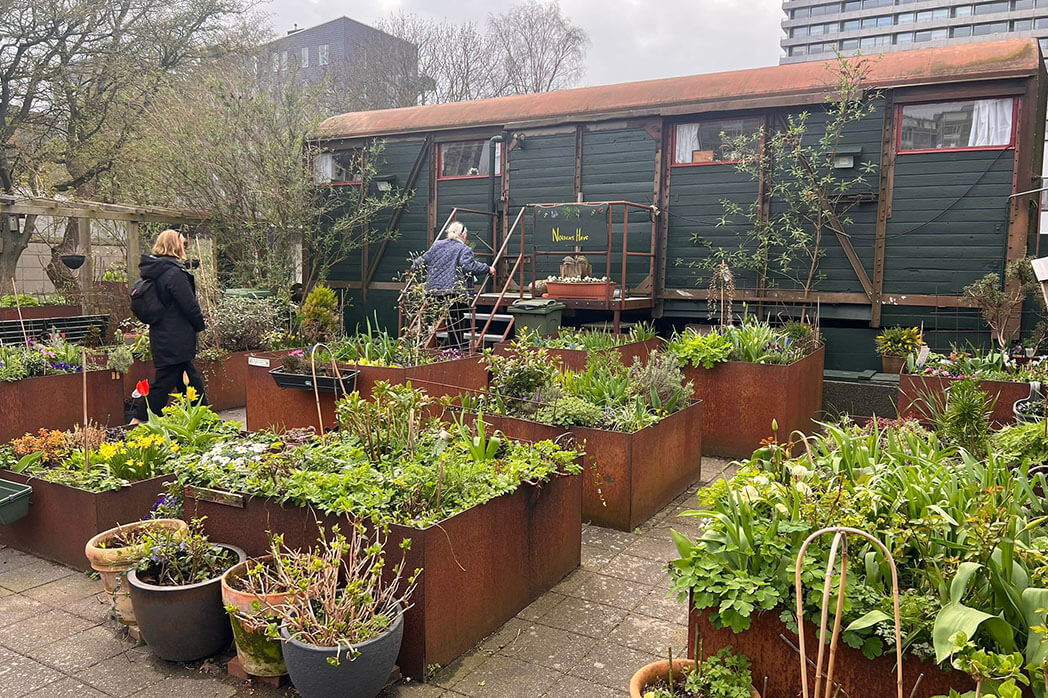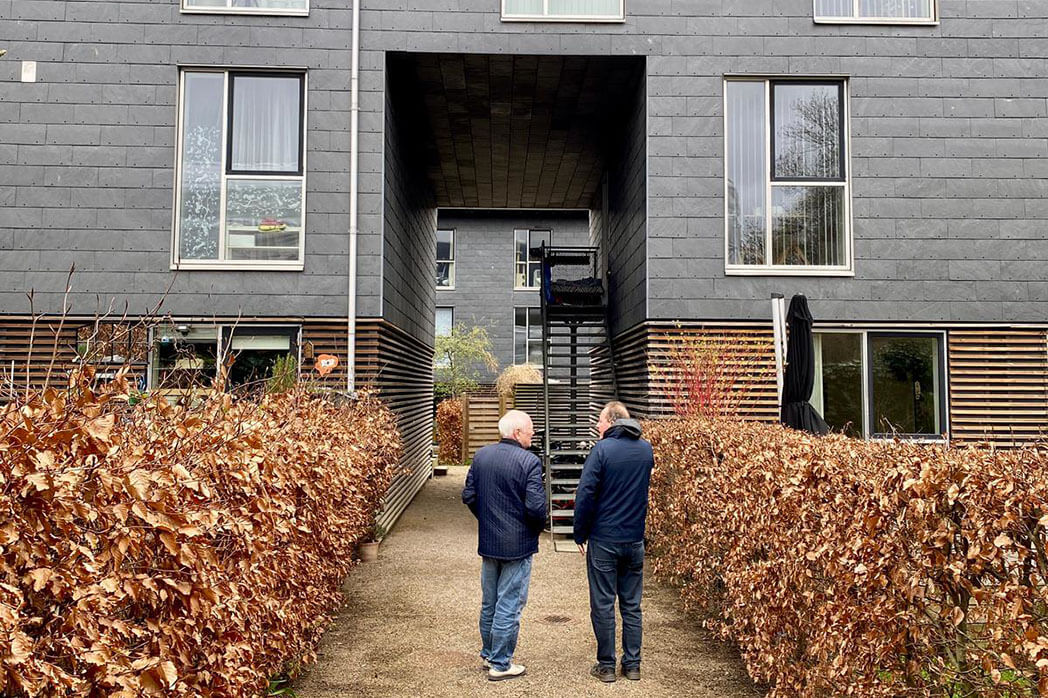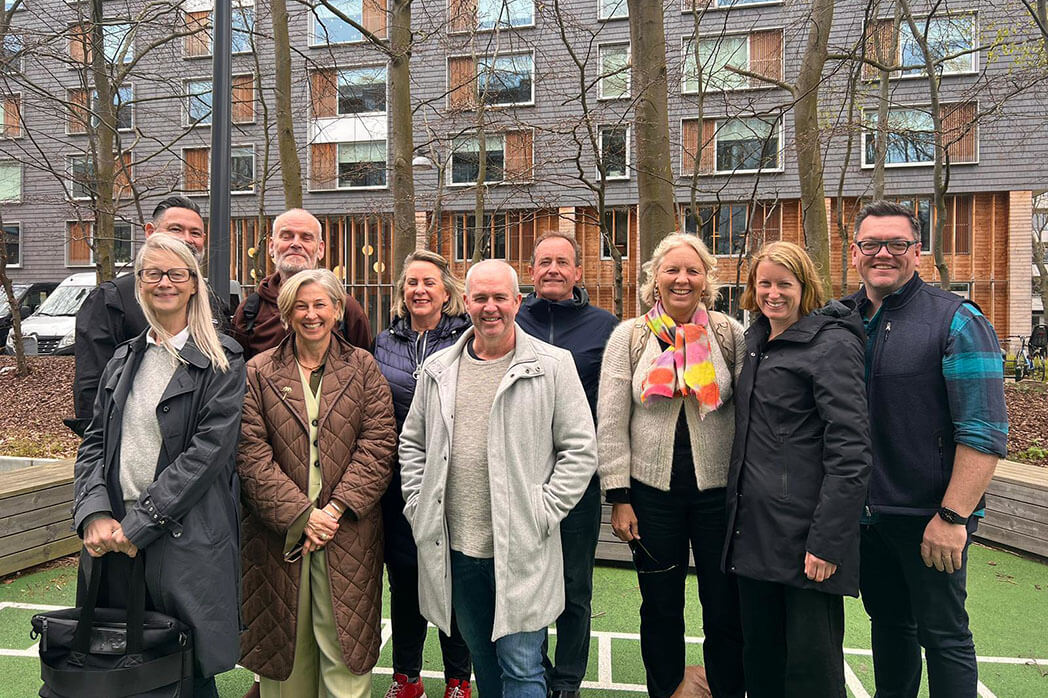10 May 2024
Last month, a delegation from the BCCM embarked on an eye-opening study tour of co-operative housing models in Copenhagen, Vienna and Zurich. Their goal was to uncover innovative solutions to Australia’s housing affordability crisis and explore the potential of the “missing middle” – the co-operative housing sector. As Melina Morrison, BCCM CEO, says, “affordable housing is a bedrock for sustainable, healthy and happy communities”.
Led by BCCM, the diverse group of participants – including representatives from co-operative housing developers, academia, co-operative housing providers and Indigenous housing groups, finance and banking sectors, and the professions of architecture, town planning and design – witnessed firsthand the transformative impact of co-operative housing on urban communities.


Putting people first
One of the resounding themes that emerged from the tour was the prioritisation of renters’ wellbeing. “The co-operative case studies we visited were designed first and foremost for people, not profit,” remarked Emily Taylor, Associate, Core Collective Architects. “This has led to better architectural outcomes, such as construction innovation, sustainability, generous communal spaces and homes that can be personalised by the people who live there … It is clear that co-operative housing offers a much-needed solution in Australia’s housing options.”
Co-operative housing models offer more than just a place to live. As Sidsel Grimstad, senior lecturer and Teaching and Learning Lead at the Griffith Centre for Systems Innovation (GCSI), explained, “it was during my research and teaching around the importance of co-operative housing models for affordability, tenant voice and community building that my awareness of both the different types of co-operative housing and their importance for equitable urban development was raised.”


Enabling affordable housing
A key factor in the success of co-operative housing in Europe is the enabling policy environment. “The good news is that we have the knowledge and resources to seed these ideas back home,” noted Melina. “Working with our co-operative housing peaks through ACHA and our finance mutual members, there’s so much we can do co-operatively to address the growing housing crisis in our cities and regional centres.”
The tour revealed innovative funding mechanisms that make co-operative housing scalable, such as government housing funds, patient revolving loans and collaborative risk-sharing approaches between private, public and non-profit stakeholders.


A vision for Australia
Inspired by the European models, the tour participants envision a future where co-operative housing plays a vital role in Australia’s housing landscape. “I am fully behind the vision of growing the rental housing co-operative sector towards 10% of social housing,” said Sidsel.
Liz Thomas, Managing Director of co-operative housing provider CEHL, said: “I have been immersed in stimulating discussions with passionate people with BIG ideas, learned firsthand about inspirational affordable housing models, and gained invaluable insights.” Emily agreed, “that everyone has a right to a home that is dignified, safe, and affordable … it is clear that co-operative housing fills a much-needed gap in Australia’s housing options.” The tour has energised participants to advocate for policies and initiatives in Australia that can replicate the success of European co-operative housing models.


A collaborative approach
A key takeaway from the study tour was the importance of risk-sharing among various stakeholders. “The collaborative approaches between private, public and non or limited profit stakeholders that these three cities use to provide affordable housing for their people, with secure tenure, quality and humane and innovative design, are inspiring,” remarked Sidsel.
The tour has not only provided valuable insights but has also fostered a sense of camaraderie and a shared commitment to driving positive change in Australia’s housing landscape.
“The amazing group of participants made this tour particularly rich,” reflected Sidsel. “Their diverse backgrounds provided complementary knowledge, skills and insights about different aspects of Australian housing, making our discussions rich and, ultimately, very solution-oriented.”
“The study tour was exceptionally well-designed and organised, and the mix of delegates provided a balance of cross-sector expertise and influence,” remarked one participant. “I would strongly recommend the tour to anyone looking to learn more about affordable housing models.”
Another participant echoed this sentiment, “This study tour has been a game-changer for me as someone who is passionate about quality, affordable housing. We gained valuable insights into the financial, social and legislative frameworks that underpin self-determined, thriving co-operative communities.”
The tour has demonstrated the transformative potential of the co-operative housing model and has ignited a renewed commitment to exploring innovative solutions that prioritise affordability, community and resident wellbeing.


There is promise on the home front. After a national co-operative housing roundtable in the Federal Parliament and another in the NSW Parliament, a submission to the housing and homelessness taskforce, and a concerted advocacy push co-operative housing is being recognised as a form of housing tenure. Released on 3 May 2024, the State of the Housing System Report includes housing co-operatives as a form of housing in Australia. The BCCM is now developing a 3–5 Year Affordable Housing Strategy to ensure the mutual sector has coherent strategies to influence housing policy further.
A report summarising the key findings and recommendations of the tour will be released soon.
With a shared vision and collaborative approach, the co-operative and mutual sector, policymakers and industry stakeholders can work together to unlock the “missing middle” for an equitable and sustainable housing future for more Australians.
For more information about housing co-operatives, visit the ACHA website.
To be added to the email list to receive the study tour report, please email Linda Seaborn.
Browse the tour photo gallery.


About the BCCM
The BCCM is Australia’s peak body for co-operative and mutual enterprises. It advocates for an enabling business environment for co-operatives and mutuals, and through its annual National Mutual Economy Report, has created a platform for discussing the vital role that co-operatives and mutuals play in the national economy. The BCCM develops and runs education and training programs, industry events and conferences, and undertakes research projects to present and promote the importance of member-owned organisations. As of 30 June 2023, BCCM has 102 members representing nearly 12.5 million Australians.


